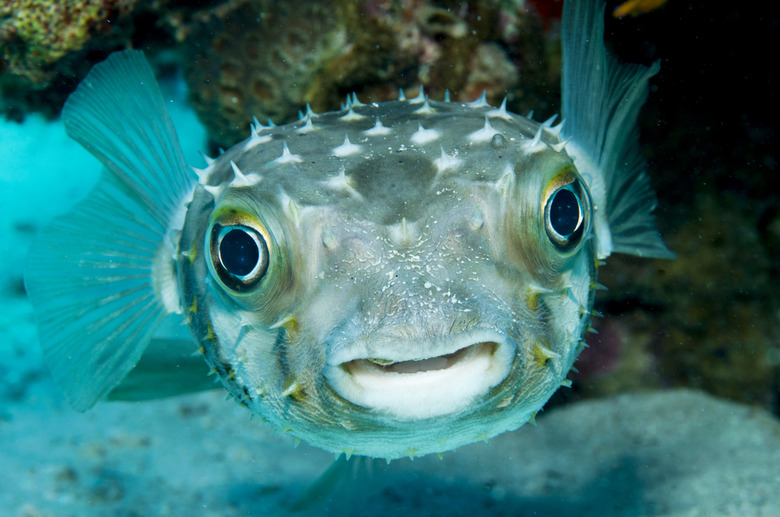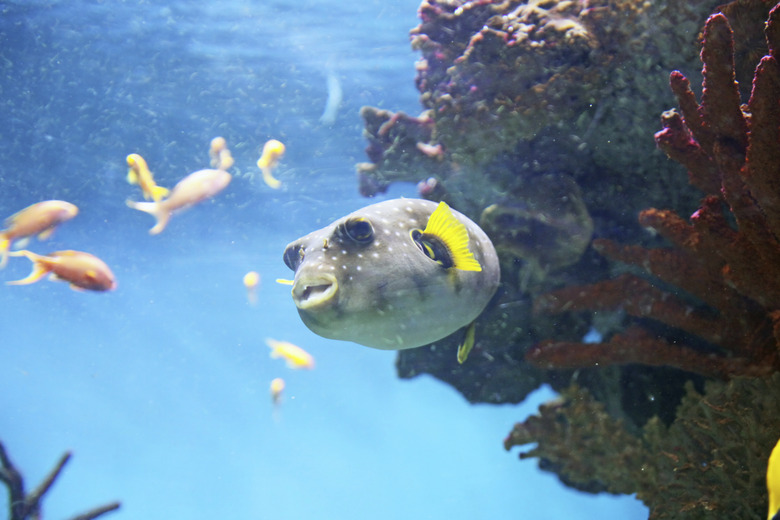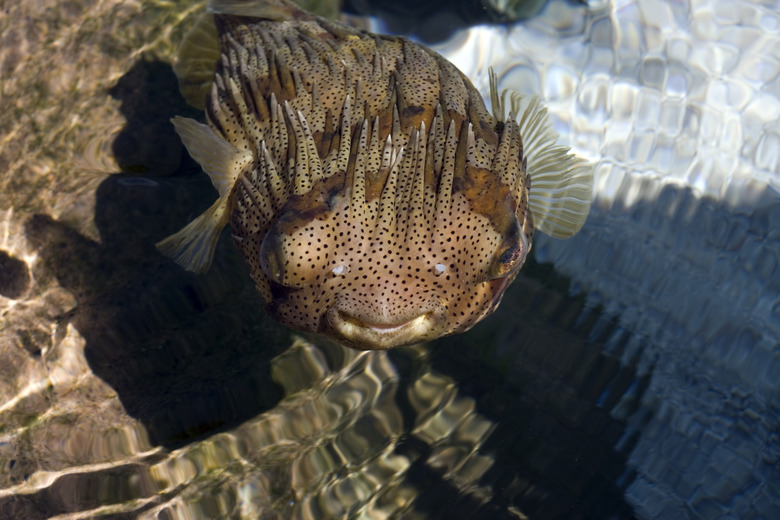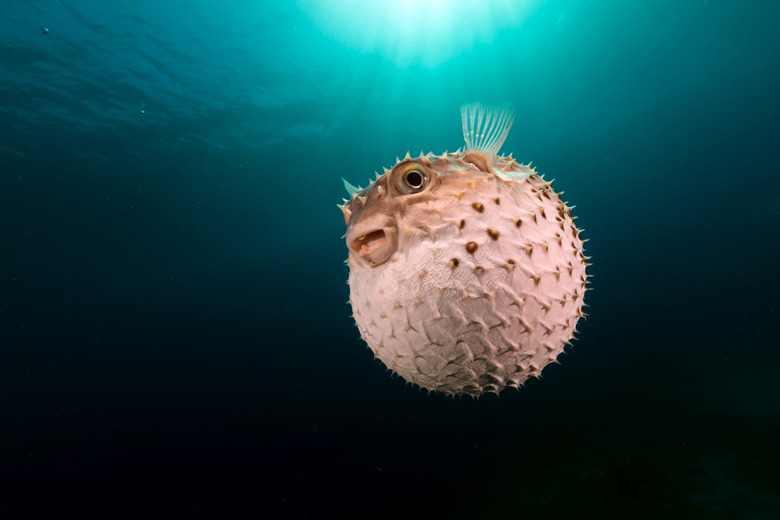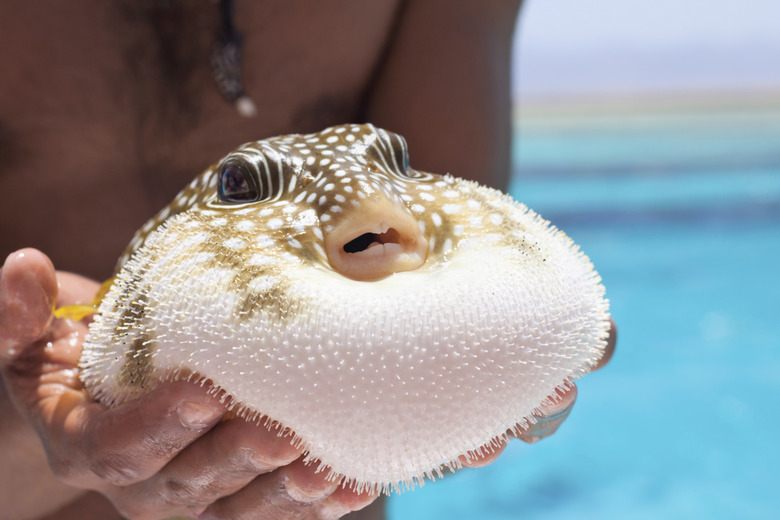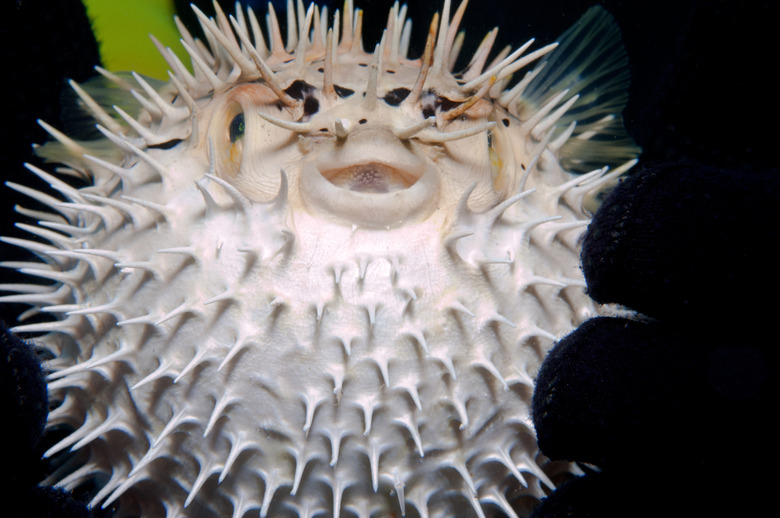Facts About Blowfish
The blowfish is part of the Tetraodontidae family, which includes over 120 species known, among others, as puffers, blowfish and toadfish. For defense, these fish rapidly inflate themselves with water until they resemble globes. Most species contain poison (tetrodoxin); this does not deter them from being considered a delicacy in Korea and Japan.
Description
Description
Blowfish can range in size from 1-inch long (dwarf or pygmy puffer, Carinotetraodon travancoricus) to over 2 feet (giant puffer, or Tetraodon mbu). These fish do not have scales but instead have spines that are even more formidable after inflation.
Blowfish eyes move independently from one another. The fish have a prominent beak with four teeth that allow them to eat algae, crustaceans, mollusks and red worms. It is these teeth that give rise to the "Tetraodontidae" name: tetra (four) and dontinidae (teeth).
Environment
Environment
Blowfish primarily live in salt water. The majority prefer warm, tropical seas or estuaries, for example, in Japan, Florida, Louisiana, Mexico and California.
A few species, such as dwarf puffers and fahaka puffers, live in freshwater environments; yet others prefer brackish water, like the green spot puffer (Tetraodon nigroviridis). Several species, like the green spot and pygmy puffers, are suitable for aquariums.
Life Cycle
Life Cycle
Male blowfish push their females to the water surface to breed. The eggs float and hatch after roughly 4 days. In their first 10 days, larvae are covered with a hard shell, with metamorphosis into a true fish occurring in about 3 weeks.
As the blowfish fry mature, they move closer to the shore and become adults. Blowfish live from 5 to 10 years.
Aquariums
Aquariums
According to Pufferfish.net, blowfish can be kept in aquariums, but they tend to eat mollusks and crabs. Their teeth can fuse together if allowed to grow too long. The solution is to provide hard shells for the fish to chew on.
Blowfish also have a tendency to jump out of the tank, so aquariums must be covered. They learn to recognize their owners and will come "running" for food.
Forced blowfish inflation should be kept to a minimum since it causes the fish huge stress.
Poison
Poison
Blowfish poison is a potent neural poison, causing paralysis and death. As such, in Haiti it has allegedly been used to create "zombies." The poison, which may give a predator bellyache or just taste bad, can be lethal to humans and has no antidote. The most poisonous blowfish is the rare tiger puffer, Takifugu rubripes.
The first recorded instance of blowfish poisoning was from Captain James Cook's 1774 excursion to New Caledonia.
Eating
Eating
Blowfish are prepared as expensive sushi (sashimi fugu), as fugu-chiri, a light vegetable and blowfish stew, and as soup or even sake. The eggs are eaten as a delicacy.
Chefs who prepare fugu are required to apprentice for at least 3 years before graduating to the poisonous fish.
In the early twenty-first century, pharmaceutical company Wextech started trials of Tectin, derived from blowfish, as a cancer painkiller.
